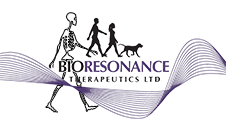About Lyme disease
Lyme disease, or Lyme borreliosis, is a bacterial infection that can be transmitted to humans when they are bitten by an infected tick.
There are around 1,500 laboratory-confirmed cases of Lyme disease in England and Wales each year, although it is estimated that there are 3,000 to 4,000 new cases each year,
About 15% of cases of Lyme’s cases are acquired abroad.
It can be treated effectively if it’s detected early on but if it’s not treated , or if treatment is delayed, there’s a risk you could develop long-lasting symptoms.
Bioresonance therapy can help with anyone suffering from Lyme Disease. Its a non evasive, natural treatment that can be done in our clinic or remotely. Check out the About section to learn about how it helped me combat Lyme.
Symptoms
Rash – the classic symptom of Lyme disease is a typical rash that is usually a single circular red mark that spreads outwards slowly over several days. The circle becomes bigger and bigger with the centre of the circle being where the tick bite occurred. As it spreads outwards, a paler area of skin emerges on the inner part of the circle.
Therefore, the rash is often called a ‘bullseye’ rash.
Flu-like symptoms – these occur in about a third of cases. Symptoms include tiredness, general aches and pains, red watery eyes, headache, high temperature (fever), chills and neck stiffness. These symptoms are often mild and go within a few days, even without treatment.
Joint problems in one or more joints. They most commonly affect the knee joint. The severity of joint problems can range from episodes of mild joint pains, to severe joint inflammation (arthritis) causing a lot of pain.
Nerve and brain problems. Some people develop inflammation to nerves, particularly the nerves around the face. This may cause the nerve to stop working and result in weakness of the face muscles. This may cause one side of the face to droop. Swelling around the brain (meningitis) and swelling of the brain (encephalitis) may occur.
Heart problems. You may experience symptoms such as dizziness, breathlessness, chest pain and a feeling that your heart is beating in a fast, irregular way (palpitations).
How can we help with Lyme disease?
for more information on how Bioresonance therapy can work, see our dedicated page here.


